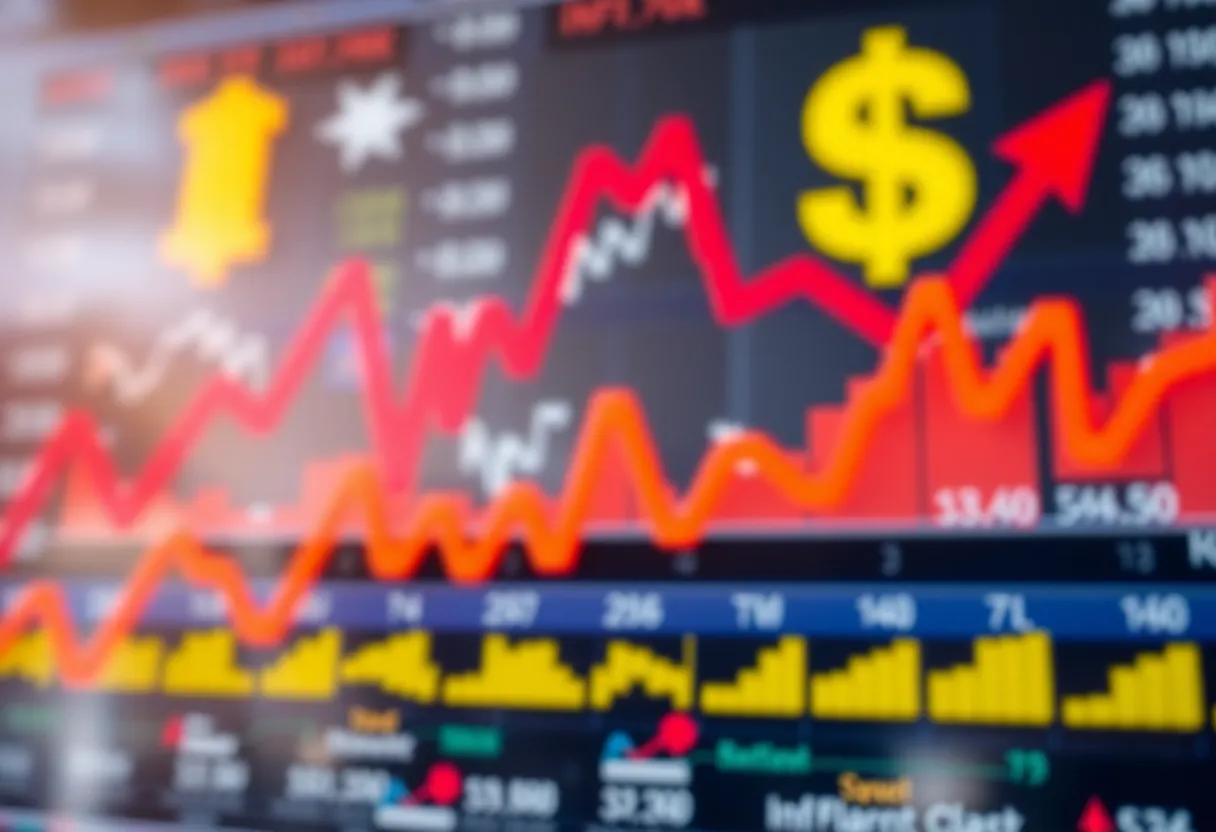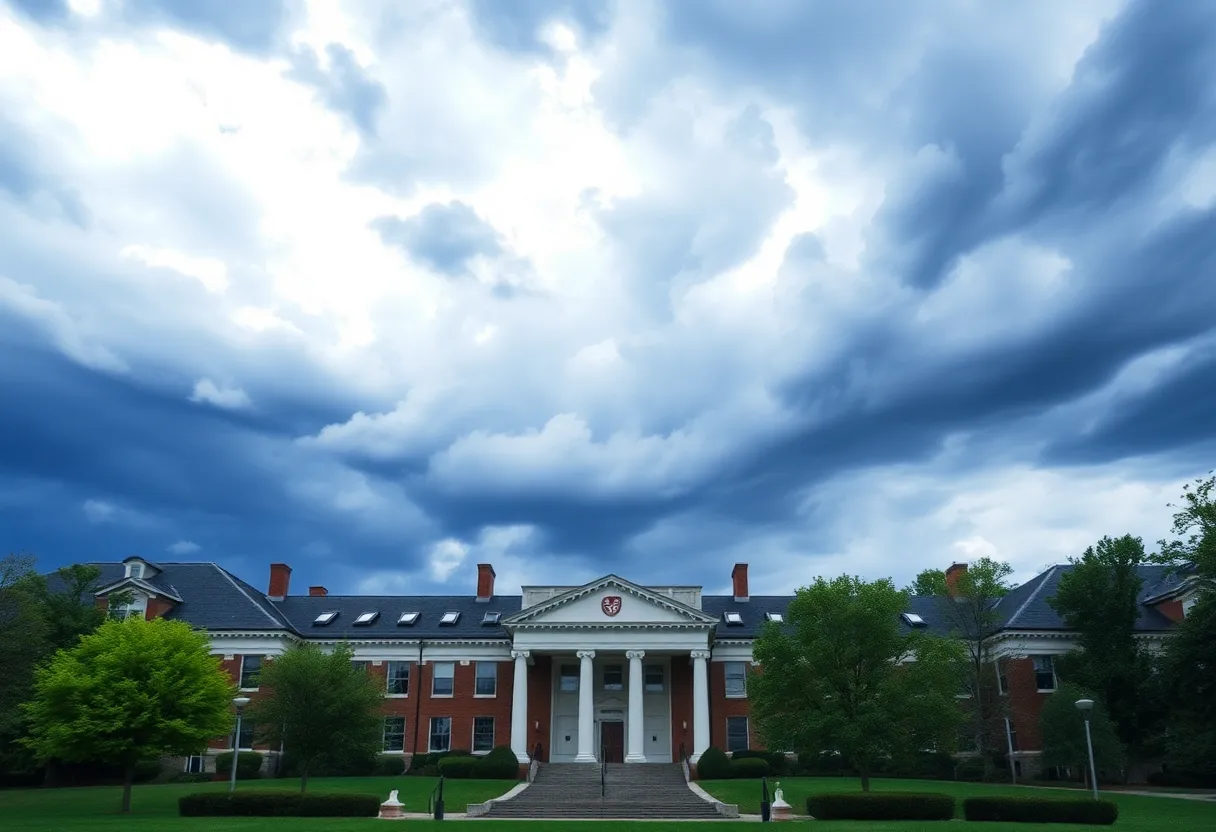News Summary
On April 16, Federal Reserve Chairman Jerome Powell indicated a cautious stance on interest rate cuts amid concerns over rising inflation and trade tariffs. The remarks caused noticeable declines in financial markets, with the S&P 500 and Nasdaq dropping significantly. Powell emphasized the balancing act of managing inflation while promoting job growth, amidst the threat of stagflation and tariff-induced recession. His approach reflects the need for careful consideration of economic conditions before making any decisions on rate adjustments.
Federal Reserve Chairman Signals Caution on Interest Rates
On April 16, the Federal Reserve chairman, Jerome Powell, delivered an important message that sent ripples through the financial markets. He spoke firmly about the potential need for interest rate cuts, but made it clear that any decisions would not come easily. Following his remarks, the financial indices reacted, with the S&P 500 witnessing a notable drop of 2% and the Nasdaq sliding down by 3%. The market’s jittery response seems to reflect concerns over rising inflation and a cloud of uncertainty surrounding trade tariffs.
Understanding Stagflation Concerns
The term stagflation has been thrown around more often lately, and rightly so. It refers to a tricky economic situation where inflation rises while growth slows down. In recent months, the U.S. economy has showed signs that could lead it down this path, especially against the backdrop of escalating trade tensions. Trade wars can have serious implications, and so far, the White House’s approach with tariffs has raised eyebrows among economists and investors alike, worrying many about their impact on corporate sales and profit growth.
The Balancing Act of the Federal Reserve
Powell faces a challenging balancing act: he has to control inflation while still promoting job growth. That’s no small feat when many are watching closely for a possible tariff-induced recession. The economy was teetering on the edge even before President Trump’s recent tariff announcements came into the picture. A year ago, rising unemployment shifted the Federal Reserve’s focus from tackling inflation to a more urgent need—preserving jobs.
The Rate Cuts That Came and Went
In late 2019, the Fed cut interest rates three times, totaling a 1% reduction. However, inflation levels began to creep up, which led to the Federal Reserve deciding to pause further rate cuts in 2020. This decision did not sit well with investors, who had expected that lower rates would help ignite business expansion and push revenues higher. As a result, the forward price-to-earnings ratio for the S&P 500 fell from over 22 in February to 19 in the subsequent months.
Tariffs and Their Impact
While the tariffs introduced by Trump have seen some pauses, existing tariffs of up to 25% on Canada and Mexico still loom large, along with a 10% tariff globally. The escalating trade situation has led to shocking numbers, with U.S. tariffs on Chinese imports reaching a staggering 145%, while counter-tariffs from China hit 125%. This kind of economic tug-of-war makes Powell’s task all the more complex.
A Study of Historical Precedents
Powell’s comments drew parallels to challenges faced by former Fed Chair Paul Volcker in the early 1980s, highlighting how he will carefully weigh decisions about interest rates until there’s clearer economic conditions. The current economic landscape includes a PCE inflation rate of 2.3% and low unemployment at 4.2%, which creates a complicated picture for policymakers. High tariffs could push inflation even higher, which Powell noted as a concern if not properly addressed.
The Road Ahead
As the Federal Reserve navigates these turbulent waters, both inflation and economic growth are under threat. Survey-based inflation expectations have been trending upwards, raising alarms. Should inflation and unemployment rise concurrently, it would create an enormous challenge for the Fed to fulfill its mandate of maximizing employment while maintaining stable prices.
Powell remarked that any consideration of rate cuts would likely only occur if there were a significant credit event, underscoring the need for caution. The uncertainty linked to tariffs is leading many businesses to be careful in their spending, which could inadvertently hold back investments essential for growth.
A Look Back at History
Your mind might drift back to the Smoot-Hawley tariffs in 1930, which many historians believe contributed to the Great Depression. There certainly are no modern historical precedents for such extensive tariffs, making the current situation all the more precarious.
Despite the hurdles, reports suggest that, for now, the economy is relatively stable. However, consumer and business confidence is showing signs of weakening. Powell seems to be taking a cautious approach, preferring to wait for more data before moving forward.
Deeper Dive: News & Info About This Topic
- Times of India
- Wikipedia: Interest Rate
- Associated Press
- Google Search: Federal Reserve
- Hindustan Times
- Google Scholar: Federal Reserve interest rates
- Reuters
- Encyclopedia Britannica: Inflation
- Financial Times
- Google News: Interest Rate Cuts








